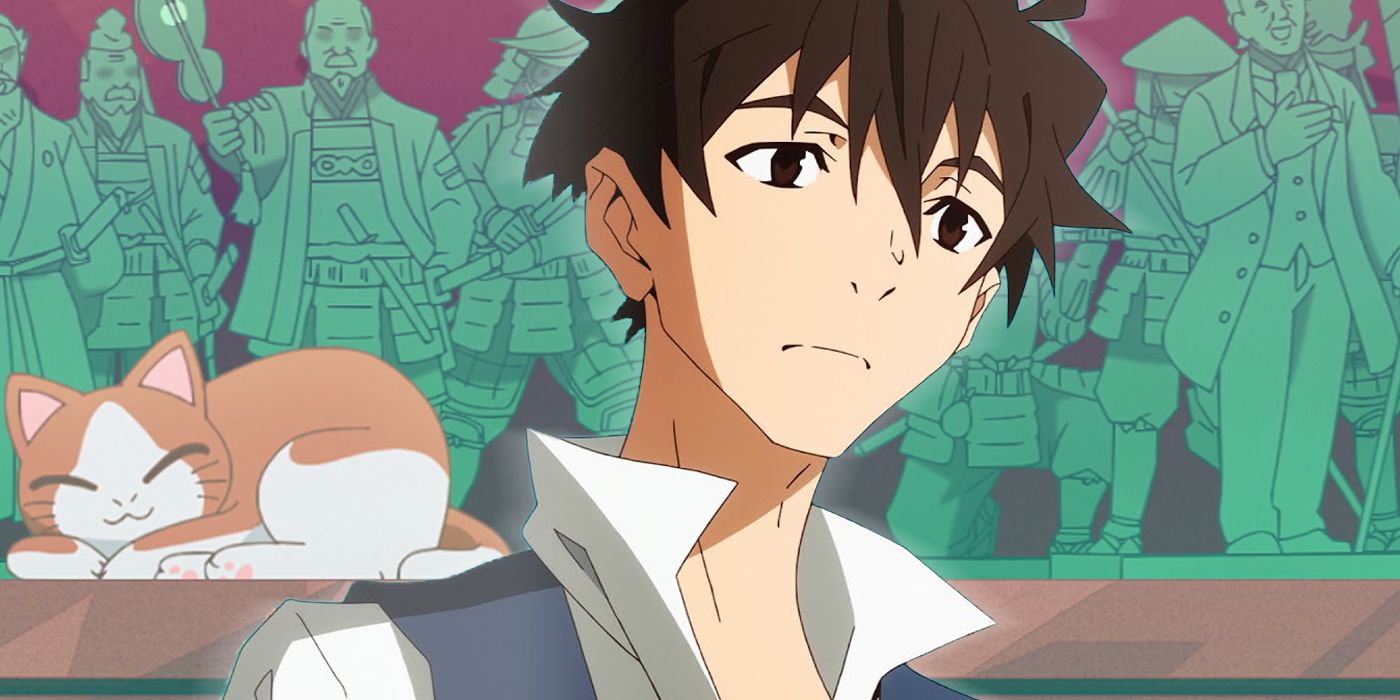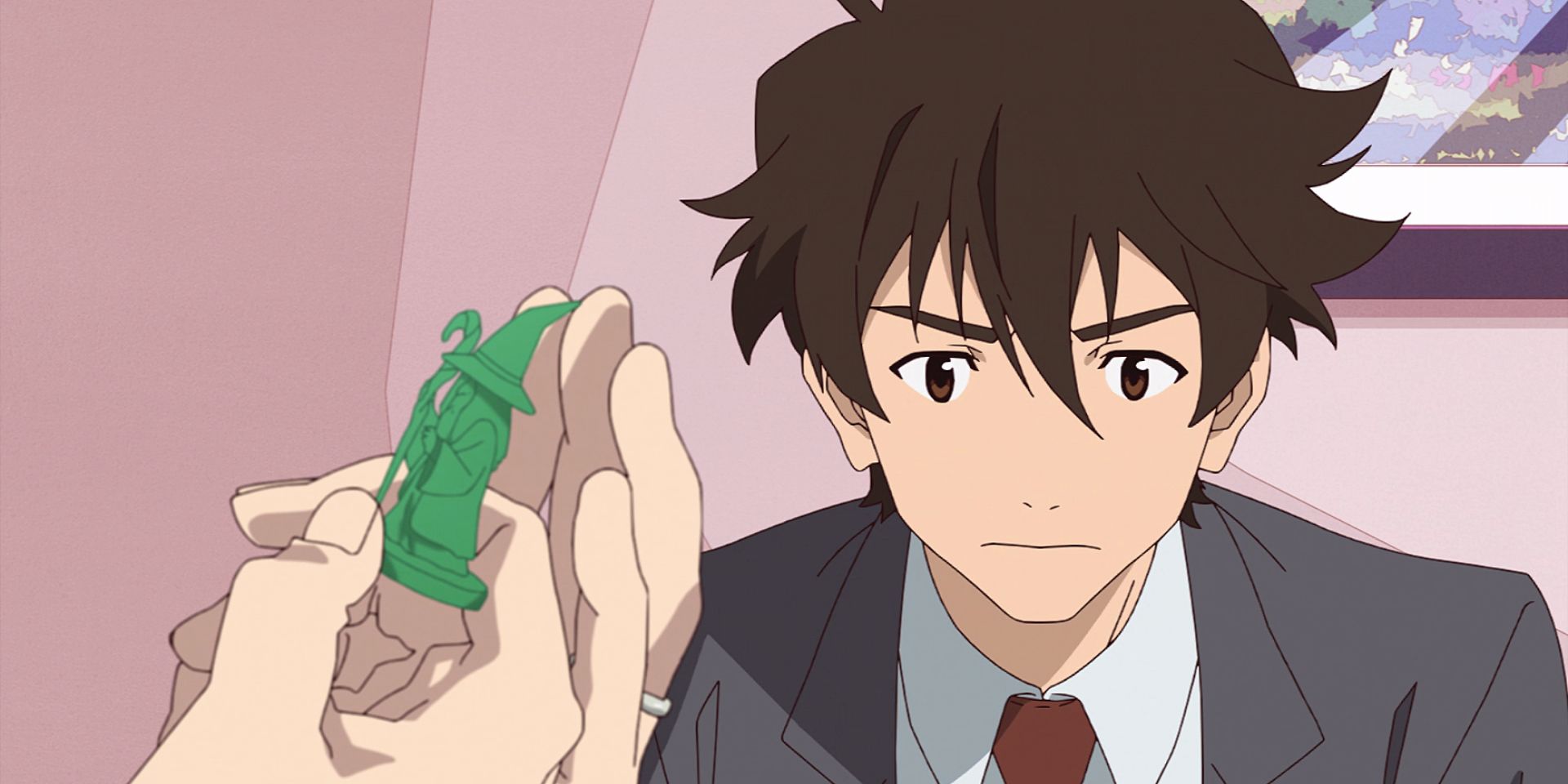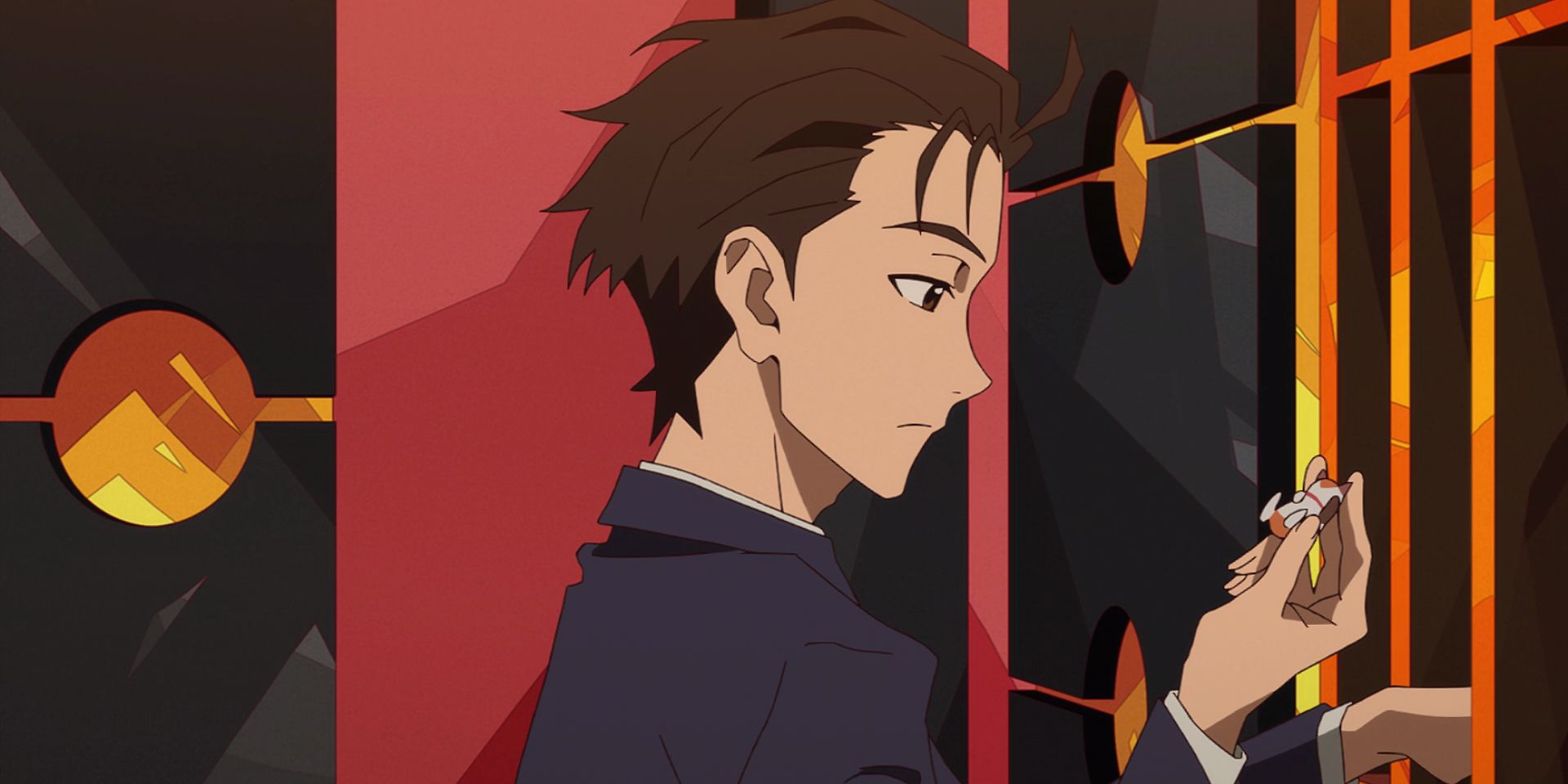WARNING: The following contains spoilers for Season 1 of Great Pretender, now streaming on Netflix.
Netflix's Great Pretender combines crime and unexpected plot twists together with one major unifying theme: luck -- a theme that is most noticeable in visual motifs in the series. From the capsule figures of Japanese warlords to beckoning cats, wizards and even fortune-telling, luck not only plays a role in the setting of the series but also in the decision-making of the characters as well. Moreover, Great Pretender also teaches viewers that luck has two sides, and is able to deliver this message via a world that feels rigged yet believable.
The main character, Makoto Edamura, starts off as a regular-seeming guy who, through a series of unfortunate events, becomes an accomplice in a pyramid scheme. Edamura winds up in a serious rut despite the prideful front he shows off. He smugly considers himself the greatest scam artist in Japan, but deep down, he just desires to make his deceased mother proud, and get back at his abandoned father. A desire to have his life turn around (and fast) is one Edamura feels strongly, ever since his father got caught assisting in child trafficking and his mother fell ill as a result of learning this.
Then along comes along Laurent. A seemingly chance encounter from Edamura's point-of-view turns his life around. He gets a reality check from a scammer far more skilled than him. Then he gets recruited onto his team. And now, instead of scamming regular people, he is aiming to eat the rich.
A desire to take down the rich and powerful is palpable and purportedly heroic, but it also comes with risks and challenges. The cast, especially Laurent prior to forming his Confidence men team, learns that to truly take revenge against their enemies, they need to rely on plans and not just luck.
Aside from the story itself, there are many visual motifs that tie into themes of luck and criminality in Great Pretender. Notably, throughout the series, Edamura collects capsule toys. Capsule toys are a gamble. You don't know which figure you will get yet Edamura uses them like good luck charms and pieces of fortune-telling for his future. He even tries to get an Angel of Luck figure for his mother but instead ends up with a wizard, which reminds Edamura's mother of his father, Ozaki, or the Wizard of Oz, as he was nicknamed. She wants his spell to grant her good luck for the future, but that future never came true for her.
This also helps indicate to the audience how unreliable a figure Oz is, especially from Edamura's viewpoint, as well as just how much Edamura and his family rely on these little signs of hope.
Meanwhile, Edamura enjoys collecting figures from the Japanese warlords series, and often self-inserts as whichever figure he pulls out. The first figure he rolls is of Toyotomi Hideyoshi, who rose up the ranks from peasant to warlord. This rise is a sign of good times to Edamura, but it could have also serve as a sign that he's about to head on an adventure, much like how Hideyoshi rejected temple life to go on his own journey and become one of the most powerful men in Japan.
Later, Edamura pulls figures like a peasant as he tries to live an honest life after his first group heist, and Masamune Date during the final arc when he tries to get revenge against his father. These capsule toys guide Edamura's path during these arcs, a path that relies on going with the flow despite how much he longs to carve one of his own.
Other than capsule toys, cats are also a major visual motif in Great Pretender. Not only are they significantly prominent throughout each arc, but they also appear in the OP/ED as well. Cats are tied to good fortune and luck in Japan, with the beckoning cat figure being one of the most recognizable symbols of this. This figure appears in front of the restaurant Edamura temporarily works at -- but it isn't the only cat figure around.
Akemi is quite an avid cat fan, evidenced by a few statues around her office. Notably, the colors of the statues vary, and for good reason: they each have different meanings. For example, her black cat figures are meant to ward off evil spirits, while some of the gold ones signal wealth. Interestingly, there is a gold cat figure statue outside her office right before the major heist occurs, foreshadowing the fortune Edamura and his team are about to earn.
Lastly, there is the cat pin figurine Makoto keeps from his mother, a calico cat pattern, which suggests a high amount of good luck. Edamura keeps this as a lucky charm, but also as a reminder of his past and a keepsake of his mother's.
Though Edamura doesn't trash his keepsake as Laurent does to Dorothy's ring when he decides to move forward, Edamura does learn the path he wants to take in life. No longer relying on fortune, wealth and revenge in Great Pretender, Edamura is finally free to do what he wants the way he desires.



